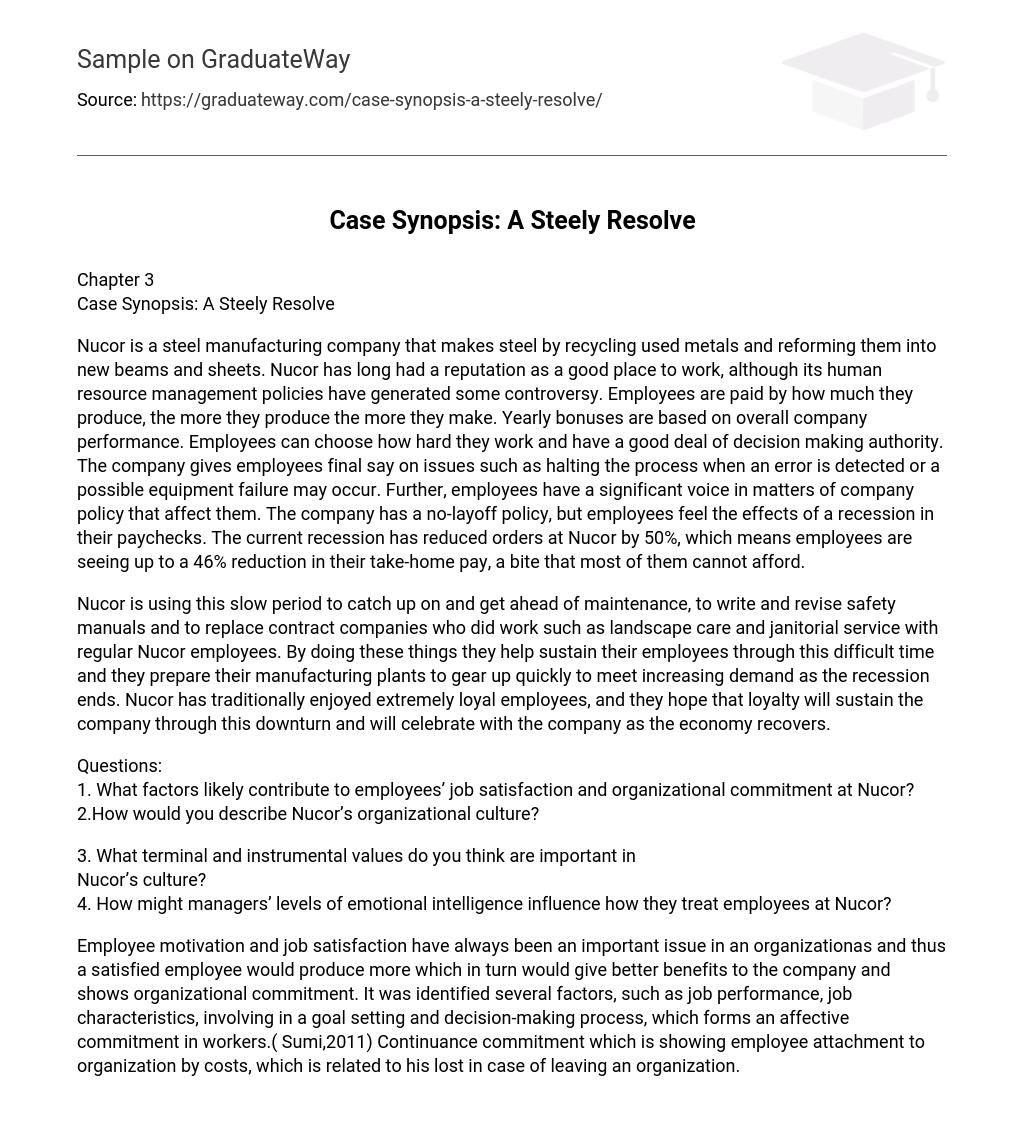Nucor, a renowned steel manufacturing company, has gained recognition for its recycling process wherein it converts used metals into fresh beams and sheets. Despite facing criticism regarding its human resource management strategies, Nucor continues to maintain a favorable image as an attractive workplace. The pay structure of employees is directly tied to their level of productivity, ensuring that higher output results in larger earnings. Moreover, the company provides annual bonuses that are determined by its overall performance. Nucor empowers its workforce by granting them the autonomy to decide their degree of effort and bestowing substantial decision-making authority.
The company gives employees the authority to make final decisions when they detect errors or potential equipment failure. Moreover, employees play a significant role in shaping company policies that directly affect them. Despite having a policy against layoffs, the current recession has resulted in reduced pay for employees. The economic downturn has caused a 50% decrease in orders, leading to many employees facing a substantial decline in their take-home pay. This has become an overwhelming burden for them.
Nucor is taking advantage of this slow period to conduct maintenance, update safety manuals, and transition from using contract companies for tasks like landscape care and janitorial service to using regular Nucor employees. These actions aim to support their employees during this challenging time and prepare their manufacturing plants for a swift increase in demand as the recession comes to an end. Nucor has always had devoted employees, and they anticipate that this loyalty will help the company endure this downturn and celebrate its recovery along with the economy.
Employee motivation and job satisfaction are crucial matters in organizations. A contented employee typically demonstrates higher productivity, leading to greater advantages for the company and showcasing organizational commitment. Multiple factors, including job performance, job characteristics, involvement in goal setting and decision-making processes, contribute to the formation of affective commitment among workers (Sumi, 2011). Additionally, employees exhibit continuance commitment by displaying their attachment to the organization, considering the costs they may incur if they choose to leave.





